 Path to Purchase: Anticipating Part 2
Path to Purchase: Anticipating Part 2
Over the years I have looked at both the path to purchase and the total journey experience for a variety of clients across the tourism industry. But one of the most exciting moments actually dates back to some work I did for a regional area in NSW, Australia back in 2004.
The client was not particularly researching savvy but they did recognise the value of research and they did trust me. As a result, they allowed me to do a pretty deep dive into the journey planning experience alongside the trip itself. This research (focus groups with customers) really gelled a lot of what I had been feeling about the path to purchase and indeed the overall journey experience. The process is shown below and it shows all the key stages as discrete elements. But given how complex the travel product is the process is more interleaved. One observation was that the trip and the planning are not as separate as we can sometimes think of them. In particular, we continue to plan and book travel throughout our trip.
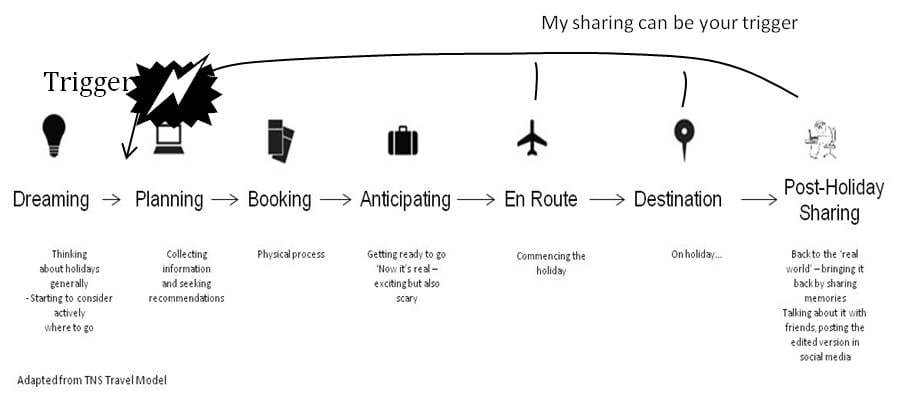
But one phase really stood out for me: the anticipating phase. Indeed I hadn’t previously seen anyone describe this element. In thinking strategically, many organisations now use it. This is a great example from Visit Canberra in their social media playbook
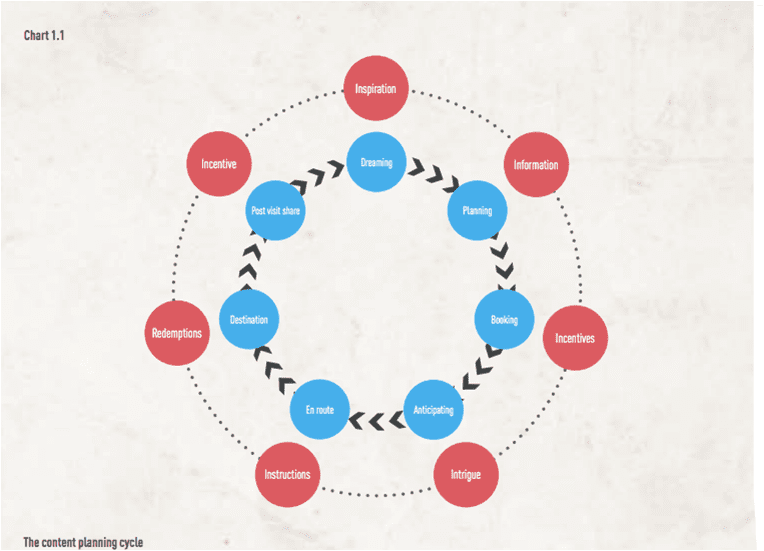
Source: Canberra Tourism
Even today that need to quantify is a challenge as it isn’t a phase that consumers recognise themselves very easily in a quantitative framework. For example, the distribution study by Tourism Australia manages to measure dreaming (see below) but not anticipating because there simply wasn’t quantitative evidence of how to influence it.
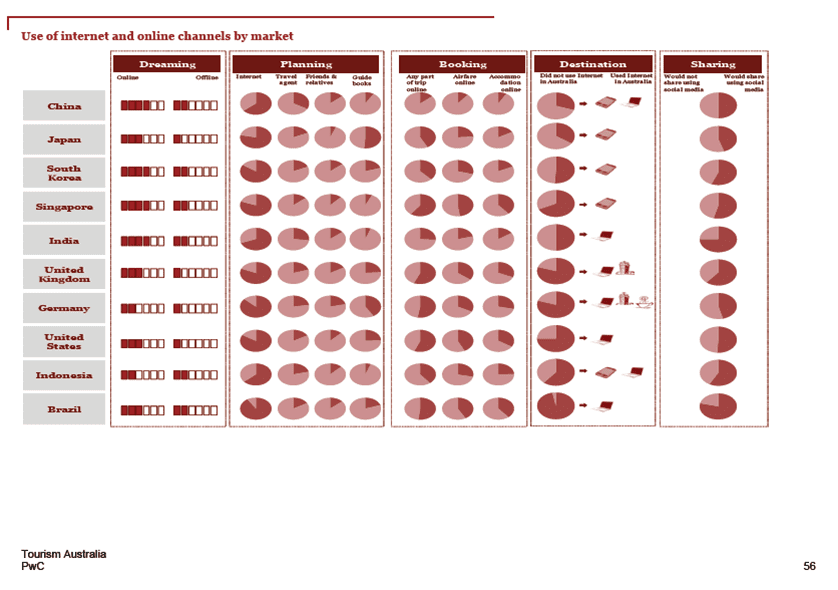
Briefly, the anticipating phase occurs after a traveller has booked at least 1 part of their trip. At this point, the trip becomes ‘real’. This is a time of heightened emotion: excitement but also fear. We start sharing details of our trip and seeking validation. But we also start thinking of all the ways it can go wrong.
I always say that in business the most monetisable asset we hold is the consumer’s emotion. Put simply, emotion = dollars! So when I heard the emotion that people talked about at this point, I was excited.
Years later I did some work with the cruise industry and travel agents. Cruise is one of the product areas where travel agents remain important. But differences are emerging in the ‘done for me’ vs ‘do for myself’ sector. So a cruise company wanted to identify ways both to connect directly with consumers but keep the travel agents on the side and acknowledge their input.
We talked about how often once the sale is done, many agents only then communicate really factual information – itineraries, upcoming payments, etc.,
These help build excitement but essentially build an emotional connection to the holiday. We identified some actions that would directly build yield and loyalty to the agent. Here they are with a few broader examples from across the industry:
• Language and tone. Instead of factual language use language that reflects the client’s own state of mind. Show excitement when talking about itineraries. If you are dealing with insurance or other compliance issues, coach it in the language of reassurance.
• This is the perfect time to upsell. So are you including any deals or offers to presell experiences that the client didn’t think about or want to wait for at the time of booking? If the booking time was used well, you’ll have a lot of intelligence about what they like – use the time and distance from the booking to find and tailor deals and offers. Here is a nice example from NOR1 (quoted by SKIFT).
time was used well, you’ll have a lot of intelligence about what they like – use the time and distance from the booking to find and tailor deals and offers. Here is a nice example from NOR1 (quoted by SKIFT).
• Build loyalty by going beyond the sale of immediate offers – share insider tips on the destinations the cruise will visit and off the beaten track moment. If other clients or team members have done the cruise or the destination – share their highlights. Top tens, must-dos etc., all work. After all, these type of techniques has enabled Amazon to grow to be the world’s most powerful online retailer. The same would apply.
• Provide tips and useful items to help with anxieties. Provide a packing list (especially for first-time cruisers).
It’s even better if you can do all this at once. Design a series of follow-ups based on what you learned from the booking process. This is a nice suite of tailored offers for a cycle company that Silverpop suggested based on what and who they bought.
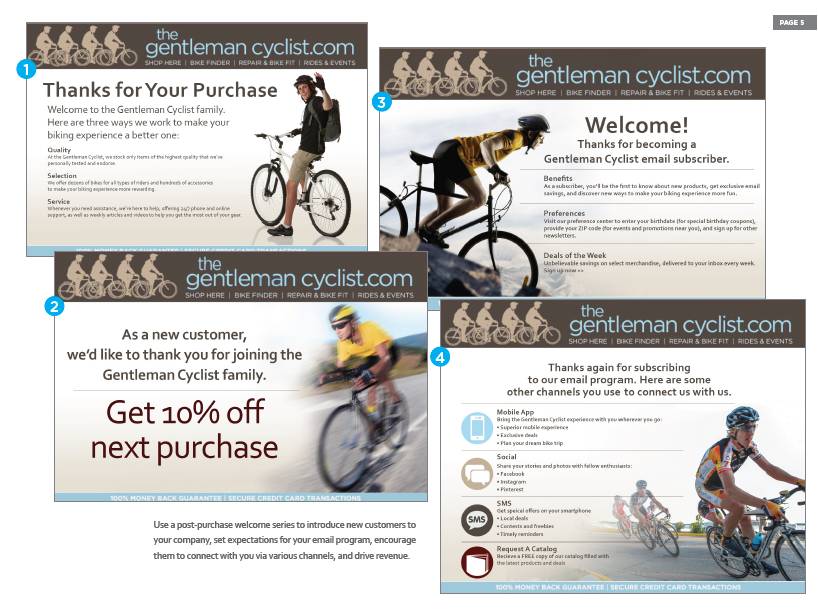
Applying these to the process of connecting helped build and upsell at multiple levels. It ensured the travel agent added value to the sale – keeping the loyalty of the customer with them. It enabled the cruise company to retain the loyalty of agents whilst also pursuing a direct strategy. Best of all it created happy travellers who had better experiences – and provided advocacy for both the cruise line and the agent.
Anticipating and designing outcomes for the anticipating phase really can help your business grow and actually is many times less time-consuming than finding new customers!
Do you want to hear more from us?
Want to be kept up to date with the latest travel and tourism insights? Join Our Mailing List. Every 2 weeks, we send the latest practical insight for you to apply to your business and destination marketing.
 Path to Purchase: Anticipating Part 2
Path to Purchase: Anticipating Part 2

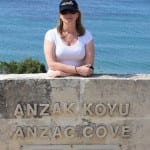

Thanks for the excellent content here. I was thinking to start my Travel blog & later to convert in an agency. Thanks a lot